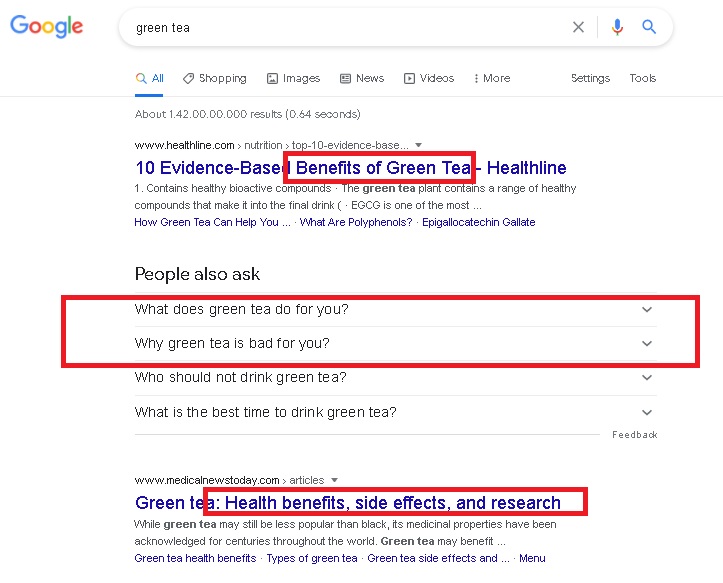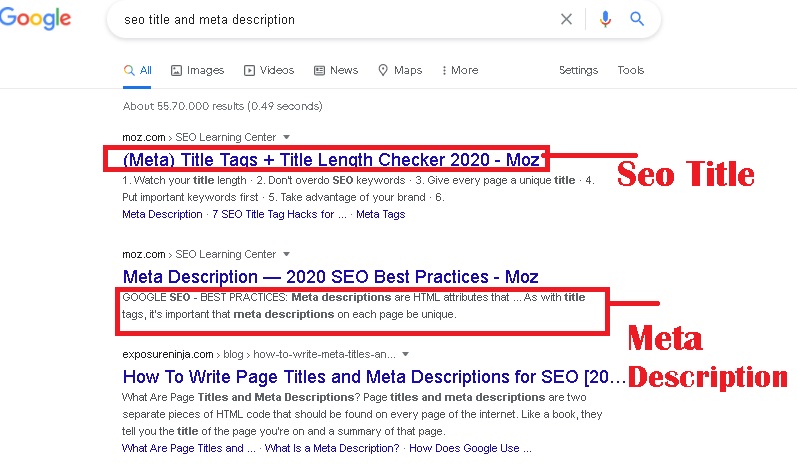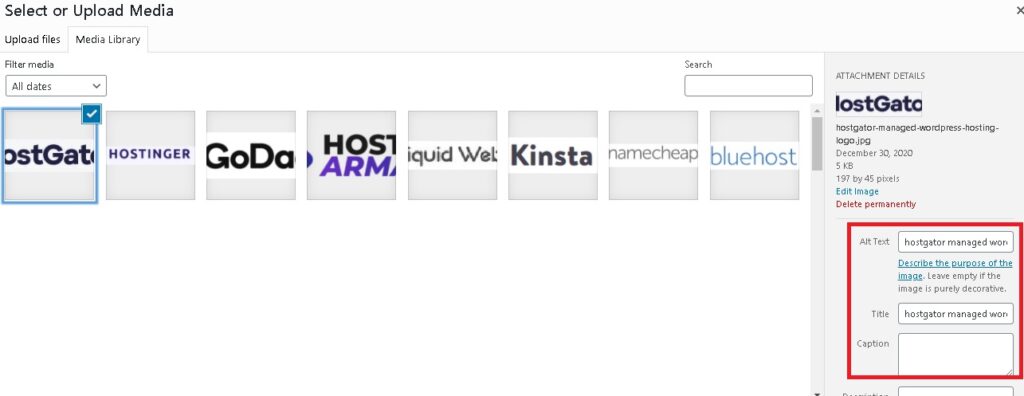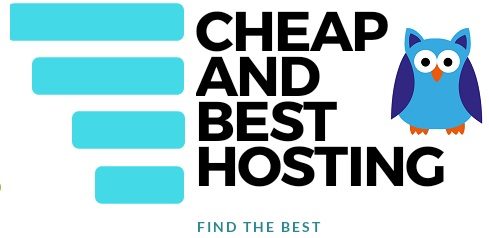For every new blogger or a business website, ranking on first page is critical to grow. Best solution for this is to write an SEO Optimized Content and follow the SEO best practices. But, Do you really know how to write a SEO Content for your website?
We have this easy guide for Beginners that help you understand the do’s and don’t you need to follow in order to get your content SEO optimized. If you know the basics, you will ensure the tips are followed while writing the one.
Similarly, you can audit your previously written content and modify it.
Lets move on.
How to Create a SEO Optimized Content?
So, writing a SEO content is easy and needs a bit of practice. There are tools like Rank Math and Semrush [Avail Semrush Free Trial and Coupon] are present today that helps you build and monitor your Content strategy.
But, are you only looking at creating your content for search engines? If yes, you need to revisit your strategy.
Optimizing content for search engines is secondary process. First, you need to ensure that your content is worth reading and created for your visitors.

How to do that?
Just ensure your content is a high quality content and a one stop solution to the problem of “Keyword” you want it to rank for.
Case 1-
Let suppose your content is ranked first in search result and visited by over hundred visitors today. But none of them found it useful. They again made a search using the same keyword and this time, they visited another article.
Isn’t it a signal to Google that your content doesn’t have weight to rank on page 1? Will it not automatically degrade the ranking of URL?
Obviously as that article is not solving the purpose and hence not liked by the visitor.
Case 2-
A visitor opened your content but quitted it in just a few seconds. He didn’t even scrolled half of your page. He went back and opened up another article.
What kind of signal this is for search engines?
If the scenario is getting repeated, obviously that certifies the flaw in your content which needs to be addressed first.
So, before moving on to writing “SEO Content” tips, we will like to reemphasize writing Useful content for people that “SHOULD RANK”.
Tips for Writing a High Quality Content
You can refer to an SEO Copywriting Guide by Moz that is really helpful to understand the importance of great content. It also helps you write in a better way.
- Create a Detailed content
- Use Multimedia [ Videos, Images, Infographics, YouTube Videos]
- Add social share buttons and ensure “Shareable Content”
- Use Table of Contents
- Use Power words in Headings
Now, when we have a High-quality content on our site, the next big thing is to ensure if the content is really an SEO Optimized Content?
What is Content Optimization or a SEO Content?
So, Content optimization is an art and science that ensures that your content is written in a way that is easily understood by search engines. That helps you get better rankings in search results and you reach the actual audience for which the content was written.
In a Nutshell, The process of content optimization revolves around keywords optimization, Defining SEO title, meta description, Alt Text, Internal Linking with anchor text along readability analysis.
To understand the concept in a better way, let us discuss them word by word –
SEO or Search Engine Optimization means optimizing your entire site including all posts, pages, images, URLs so that search engines like Bing, Yandex, and Google can understand them easily. That helps them allocating each of the pages to relevant keywords and position them when requested.
Content or Article is pretty easy to understand. It refers to the information shared to visitors via individual URLs which is meaningful and informative.
Optimization means tweaking. Following best practices, making necessary changes as per the latest search engine guidelines.
Key Steps for Content SEO Optimization
If you are curious about knowing the steps that are involved in Content SEO Optimization, you must start making a note of them now.
Step 1- Find Low Competition Keywords [Semrush or Ahrefs]
So, to write better content, the first step is to know what the keywords that you should write for are. Every keyword competes between thousands of websites where the same keyword is targeted.
But who really wins? Frankly speaking, no one knows this actually as exact ranking factors are not discussed anywhere by search engines.
But if High Domain Authority sites with thousands of backlinks are ranking in top positions for a particular keyword, obviously that sounds like a high competition. Filter out the keywords that are difficult.
Always try to find a keyword that is low in competition, which is where low DA sites with fewer Backlinks are ranking. Cracking the top rank becomes easier there.
Note- While you research for low-hanging fruit, also find its popularity among the audience. How many times a particular keyword is searched in a month?
Few Tips –
- Use tools like Semrush or Ahrefs.
- Target Long Tail Keywords.
- Find Google Auto suggested keywords and include them in your post
Step 2- Identify User Intent
Now, when you have a keyword like “Green Tea”, you must try to find out the kind of pages that are already ranking for this keyword.
For example, we did research and entered the keyword “Green Tea” in Google to find what kind of pages are ranking in top slots.
So, that means when someone is writing a keyword- “Green Tea”, what exactly that user wants to know about this term.
Here, you will find “Benefits of Green Tea” is ranking in the first position. Check related questions people are asking, again related to Green Tea’s benefits.
Move on to second result, it is also showing Health benefits and Side effects of Green Tea.
So, if you are targetting this keyword, you must write a content that revolves around benefits, side effects, pros and cons etc of this keyword.

It is clear that not one wants to know “how to make Green Tea” or “Pricing of Green Tea” by just typing the keyword “Green Tea”.
For every keyword, you want to rank for, understand the purpose and importance of that particular keyword. Ask yourself, why people are searching for this particular keyword. If your content provides the answer, it is rankable.
Few Tips –
- Check the same keyword on multiple search engines you want to rank for.
- Take a hint from questions that Google shows you as “People also ask”.
- For Idea, you can also use a tool called – Answer the public.
Step 3- Optimize Content for Keywords [Use Rank Math or Yoast]
Keyword Optimization helps in the inclusion of your Primary Keywords and secondary/related keywords in important places of the overall content.
These places are SEO Title, Meta Description, First Paragraph, Headings, Conclusion, etc. You can also refer to this guide by Alexa which gives you in-depth insight about keyword placement.
There is also a theory of KGR Formula by Mangools which might help you with some initial traffic. All Amateur bloggers who are either starting a blog or looking for blog topics should visit this page once.
Today, if you are on WordPress, this task is pretty easy with free tools like Yoast and Rank Math. Read our in-depth Rank Math Review to understand how it can help you optimize your content and keyword placement.
Few Tips –
- Choose keywords that are related to your blogging niche.
- Don’t over-optimize.
- Avoid keyword stuffing.
Also check our internal guides on Cachify and GrooveFunnels Review.
Step 4- Add Proper Headings Tags [H1, H2, H3]
Ideally, this step is a part of the previous step and can be covered there only. But as it is an important point to discuss, we decided to discuss this as a separate step.
For better SEO optimization, every content must be distributed between title, headings, and subheadings. You can also take inspiration from this article.
Note- You can use H2, H3 or upto H6 multiple times in a content, but H1 can be used only once.
Few Tips –
- Use tools to check the heading structure used by competitors.
- Include Keywords in headings.
- Ensure the headings are explained well in the paragraphs below.
Step 5- SEO Title and Meta Description
SEO Title and Meta Descriptions are the information that is displayed by search engines to users when displaying your site in search results.

Every SEO optimized content is incomplete without a proper title and description.
Please note that SEO titles and H1 headings or content titles are different concepts. The SEO title is what that user will see during the search results. But when they will click on it, they will be redirected to your content, there, what they will see will be your Page heading or H1 Title.
Similarly, a “Meta Description” is about a 160 character space given to you which tells the users what your page is all about.
Both SEO Title and Meta Description should be informative and catchy to get you the best possible CTR. If your CTR is genuinely good, that will help you rank better for sure.
Few Tips –
- You don’t need to code here, simply use tools like Rank Math.
- Don’t breach the character limit defined there.
Step 6- Image SEO and Alt Text
So, if you want to optimize your content’s images to appear in top position during “Image Search Results”, you must optimize them separately.
Images, Infographics and even Videos are often the part of our overall content. Obviously images makes them informative, beautiful and engaging.
But, How will Google know the purpose of that image? How will the blinds or the visually impaired get to know the purpose of the image?
This is easily possible by adding “Alt Text” while you upload the image. If you are on WordPress, you can add them directly during the upload from the media section.
So, What exactly is Alt Text? Alt text or alternative text, are used to define the purpose of the image, its function, and reason for adding in an article. It also helps search engines to identify them and rank them in image search results.

Not only this, you must, also clearly define the title and caption of images.
For overall SEO, ensure the guidelines like speed optimization, using relevant images, clear images and correct placement should be followed.
Needless to say, every image should be mobile friendly and responsive.
Step 7- Final Content Audit
Once you are done with above mentioned 6 steps that help you make your content SEO friendly, This is the Final Step where you can audit your content using a professional Semrush Content Auditor.
Just to double sure, Bing’s SEO Analyzer also helps you identify the gaps in various parameters.
Understanding Google EAT and YMYL Updates to Write and Optimize Content
If you are not already aware of Google EAT and YMYL algorithm updates, you must read – this article by Semrush.
E.A.T.- stands for Expertise, Authoritativeness, Trustworthiness
Y.M.Y.L. – stands for Your Money or Your Life
Let suppose your content is about the treatment of some disease. It’s long article with full detail, but the writer is not a qualified doctor. Do you want Google to rank this article?
Second case, Your article is about investment guidance but the author is neither a graduate nor a certified investment analyst. He doesn’t even has any relevant experience.
If Google ranks this article, do you think it will help the audience?
So, certain topics that are related to health, money, life, etc are ranked basis the knowledge and the trust factor.
Google’s EAT and YMYL ensure the benefit of all users accessing its search engine.
Pro Tips to ensure your content is Google EAT and YMYL compliant-
- Ensure your content is factually correct and updated.
- It must have proper links to policies, guidelines, and related important references.
- These types of content ideally must be written by experts and qualified writers.
- Ensure the Author Bio has relevant info with social links to verify the expertise, authoritativeness, and trustworthiness of the writer or the website.
What are the types of SEO content?
How to Identify and Define a perfect SEO content strategy?
Content for SEO or for Readers?
You understood all crucial steps to “optimize the website content for SEO”, but you must understand that pleasing search engine should not be your on point agenda.
If you are writing content only for search engines, your entire efforts would suffer.
To convert a new visitor into your customer or a returning visitor, you must provide value through your content.
If there will be a weight in content, that will automatically improve your link building and social share. Be rest assured, sooner or later, the rankings are bound to come.
Best Types of SEO Content that Ranks
Do you know about a few best types of content for SEO purposes? If the answer is “No”, you must have a look at the following types of content that is important for the site :
About Us Page – You remember the EAT and YMYL guidelines we discussed above? For every site, the “About” page is very important. Ensure it is properly packed with your experience, purpose, team, capacity, awards, and everything that your audience must know.
High Authority Blog Posts & Articles – For every website, A blog post can drive massive traffic, and simultaneously, it builds the authority as well. This SEO content helps you build the visitor base which ultimately converts into a paying customer.
Infographics – Infographics are images with information. They are easy to save and share on social media. As they are colorful, attractive, and meaningful, they attract visitors to your pages. Ensure proper alt text, title, and caption, you might also get visitors from image search results.
FAQS, How-to-guides, and Lists – Many a times, a reader is not in a mood to read entire content. Adding FAQs, Lists, and How to guides provides them quick and easy guide or answer to their queries.
Use proper headings and add Schema to get features in “Rich results”.
Trending Articles – One of the great idea to get instant traffic is to write on topics that are latest and trending. Check out the latest trends that are being searched on search engines using “Google Trends“.
The only word of caution is that this trick can give you instant traffic but it is never long-lasting.
Videos – Videos are the best type of content you would find going viral on social media. As there are typically less in volume, you can rank them comparatively easily also. Videos also add value to your overall content strategy. They make your content more engaging and meaningful.
This study shows how Videos can help to reduce the bounce rate by up to 34%.
Further, if you want to explore more content ideas, you can include slideshows, directories, and a few glossaries. You can even have hybrid SEO content as per the need and purpose.
How to Create an SEO Content Strategy that works
We have entered in the year 2021, which means the competition will be furthermore stiff. For anyone who is just creating SEO content without a proper strategy, and looking forward to a positive response from search engines, it is now the time to great up.
You need to be systematic and by all means, need to be better than competitors. Use Semrush’s tool below to analyze how your competitors are planning to move ahead.
We have mentioned a steps by step strategy to create and develop a perfect SEO Content strategy for 2021, Lets get started :
Step 1- Set the Purpose, Goals and Key Result Identifiers
Before creating and optimizing content, you must know the purpose. Have you already created a goal and key result identifier as a part of the content strategy? If not, you must now figure out a few things like, is the website created for “Affiliate Marketing”, or just for Google ads. Is it a micro niche created for event blogging or with a long term perspective?
A few questions that you need to ask yourself and later set your goals or key result identifiers on which you will develop the strategy.
You may need a copywriter if your website is purely sales driven project.
Your pages should be created for search engines as well as for engagements leading to action by visitors.
Step 2- Identify your Target Audience
Who are your visitors? Do you know their demographics?
Language, level of engagement, professional or casual etc can be a few things that can be fixed only when you know your audience well.
Today, a young generation will focus on something that can be shared on social platforms like Instagram. You need a lot of shareable images to promote this type of content.
In fact, you need to get down to even technical levels. For many countries, you might now see audience having fast internet. If your pages are not well optimized for mobile, you might see high bounce rates. Overall site strategies like creating a static website or dynamic can also be considered here.
Your audience will have different behavior during festivals, occasions like the new year, so hence and so forth. Hence a perfect SEO content depends a lot on this step.
Step 3. Create a Schedule
How about creating a calendar to systematically schedule your posts. Every content is created for a purpose and hence, while quality is important, fixing the timelines should also be adhered to.
Mark the schedule accordingly in a calender with proper dates and time when you are planning to publish the content.
Same strategy can be used for updating the content as well. A Seo content can never be stale.
If it is not updated regularly, it is of no use to your audience.
How to create and follow editorial calendar:
Create categories, define baby steps, develop the overall content strategy basis the timelines and document it.
Don’t forget to notify everyone in the team and ensure someone is monitoring the progress.
- Define steps like sequencing of the posts, one after another,
- Fix deadlines [short deadline can only help]
- Place it over tools like Google Calendar)
- Share it with your teams
- Monitor it regularly.
Complex content takes time, avoiding last-minute rush is the only key to develop it error-free.
Step 4. Periodic Review and Assessment
Now is the time to use tools like Microsft Clarity. Monitor the audience behaviour, best part of the pages, bounce rates, social shares and other hygiene factors that tells you the overall engagement.
Using Google Analytics always helps but other tools like Buzzsumo etc can also be factored in.
Analyze, tweak or update, and keep monitoring it. Creating a SEO content that is well-optimized needs continuous efforts. It cannot be perfect in the first shot.
Regular update of headings, meta titles, descriptions, and images cannot be missed if you are serious about a perfect content.
Conclusion
We discussed a lot about how to write content that is optimized for search engines, or SEO optimized article that becomes a vow factor for the audience too.
It will always revolve around relevance, readability, following basics and best practices, adhering to timelines, and following search engine guidelines.
Related – SEO Analyzer, Rank Math Review, Semrush Free Trial, Cheap SEO
About Author: Vishesh Gupta

Seasoned Professional with 15 years of experience in Sales and Marketing. Entrepreneur, Consultant and Blogger helping people earn through jobs and blogging. Experienced Hosting Reviewer who likes to collect detailed info about existing players and share it with my audience. Previously worked with leading Banks and Telecom Companies.
I completed my Masters in Management with specialization in Finance and Marketing.
Visit our Hosting Review and Blogging Guide for more interesting articles.



In this articles, do’s for optimizing content is explain in a beautiful manner. But can you clearly tell me what step should avoided for optimizing content. It help us in increasing the rank of website
Thanks, kenith,
it will help you a lot in writing SEO content for your blog. follow the steps and see the difference.